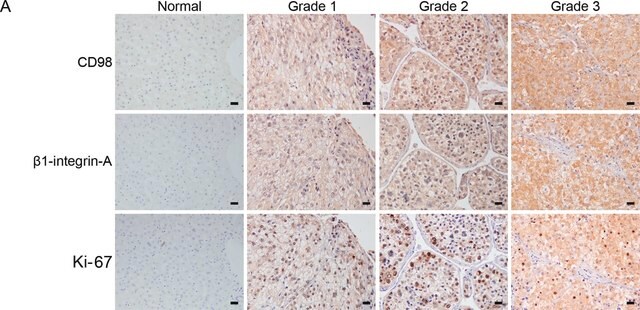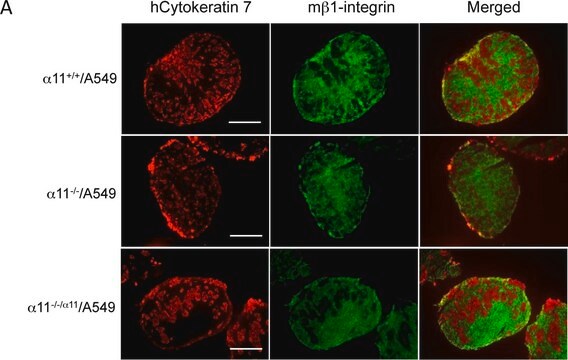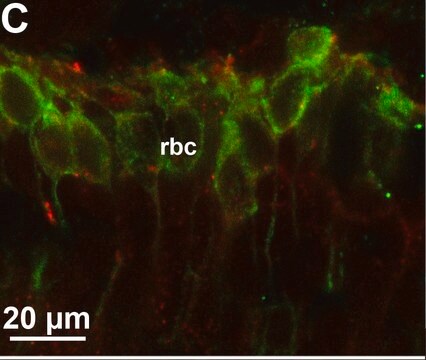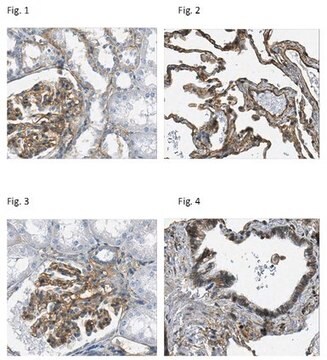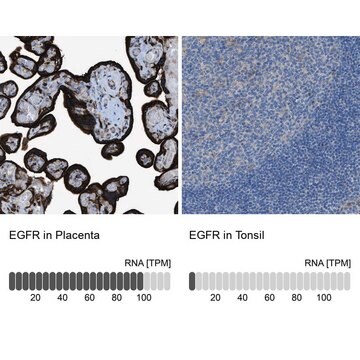MAB1900
Anti-Integrin β1D Antibody, CT cytoplasmic domain, clone 2B1
clone 2B1, Chemicon®, from mouse
Synonim(y):
CD29
About This Item
Polecane produkty
pochodzenie biologiczne
mouse
Poziom jakości
forma przeciwciała
purified immunoglobulin
rodzaj przeciwciała
primary antibodies
klon
2B1, monoclonal
reaktywność gatunkowa
canine, human, mouse
producent / nazwa handlowa
Chemicon®
metody
immunocytochemistry: suitable
immunohistochemistry: suitable
western blot: suitable
izotyp
IgG1
numer dostępu NCBI
numer dostępu UniProt
Warunki transportu
wet ice
docelowa modyfikacja potranslacyjna
unmodified
informacje o genach
human ... ITGB1(3688)
Opis ogólny
Specyficzność
Immunogen
Zastosowanie
Cell Structure
Integrins
Immunocytochemistry:
Immunohistochemistry: 1:25-1:200. Frozen, unfixed tissue sections, post-fixed with 2% PFA after primary and secondary antibody additions {van der Flier, 1997}. Alternatively, 4-7μm cyrosections fixed with cold acetone for 2 minutes and stored at -80°C until used. Airdried sections are rehydrated in PBS prior to use; detection via ABC systems is encouraged.
Optimal working dilutions must be determined by the end user.
Postać fizyczna
Przechowywanie i stabilność
Inne uwagi
Informacje prawne
Oświadczenie o zrzeczeniu się odpowiedzialności
Nie możesz znaleźć właściwego produktu?
Wypróbuj nasz Narzędzie selektora produktów.
polecane
Kod klasy składowania
12 - Non Combustible Liquids
Klasa zagrożenia wodnego (WGK)
WGK 2
Temperatura zapłonu (°F)
Not applicable
Temperatura zapłonu (°C)
Not applicable
Certyfikaty analizy (CoA)
Poszukaj Certyfikaty analizy (CoA), wpisując numer partii/serii produktów. Numery serii i partii można znaleźć na etykiecie produktu po słowach „seria” lub „partia”.
Masz już ten produkt?
Dokumenty związane z niedawno zakupionymi produktami zostały zamieszczone w Bibliotece dokumentów.
Nasz zespół naukowców ma doświadczenie we wszystkich obszarach badań, w tym w naukach przyrodniczych, materiałoznawstwie, syntezie chemicznej, chromatografii, analityce i wielu innych dziedzinach.
Skontaktuj się z zespołem ds. pomocy technicznej